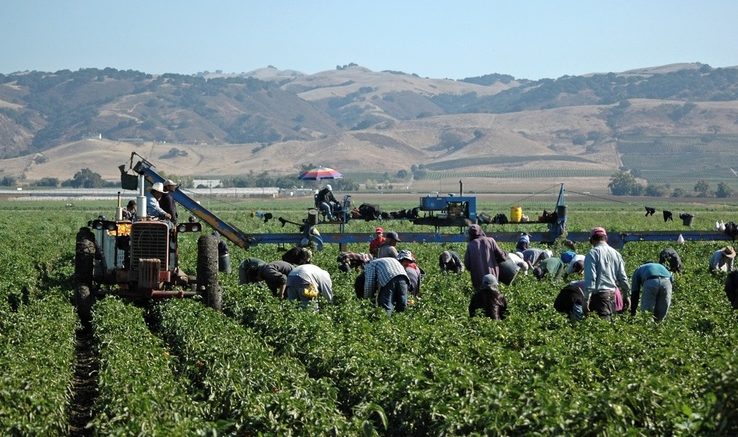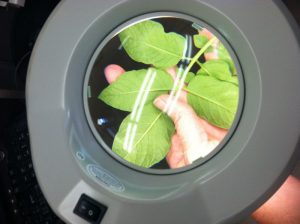Washington State University Extension is reporting that they found potato psyllids on 10% of the traps deployed for their monitoring network, but they saw some more on cards brought to them by cooperating consultants. Please note that the maps below may not represent the full extent of distribution this week, because they do not include the results from locations outside of their monitoring network. Most of the cooperator’s psyllids were found in areas east of the Tri-Cities. Potato psyllids are migrating into potato fields all of the Columbia basin now.
Scout For Psyllid Nymphs and Eggs
It is time to monitor for immature psyllid life stages, i.e. the eggs and nymphs. Collect 10 leaves from 10 locations from the 10 outer rows of the field. Look on the leaf edges for eggs, and on the underside of the leaves for nymphs. If you find them, then you might want to reconsider your earlier psyllid management program and you might want to apply an insecticide that will control eggs and nymphs.
The picture (below left) shows the magnifying lamp we use to examine leaves for psyllids. But, you can also use a hand lens to get the job done. The photo (below right) shows a psyllid nymph on a potato leaf (photo by Andy Jensen, NW Potato Research Consortium).
Potato Psyllid Management
Potato psyllids are important pests because they can transmit the bacterium that causes zebra chip disease. We cannot stop them from migrating into potato fields, but we can control them once they have landed. The 2018 IPM Guidelines for Insect and Mites in the PNW has a very good chapter on potato psyllids and describes management strategies in detail.
All info provided by Washington State University Extension.





